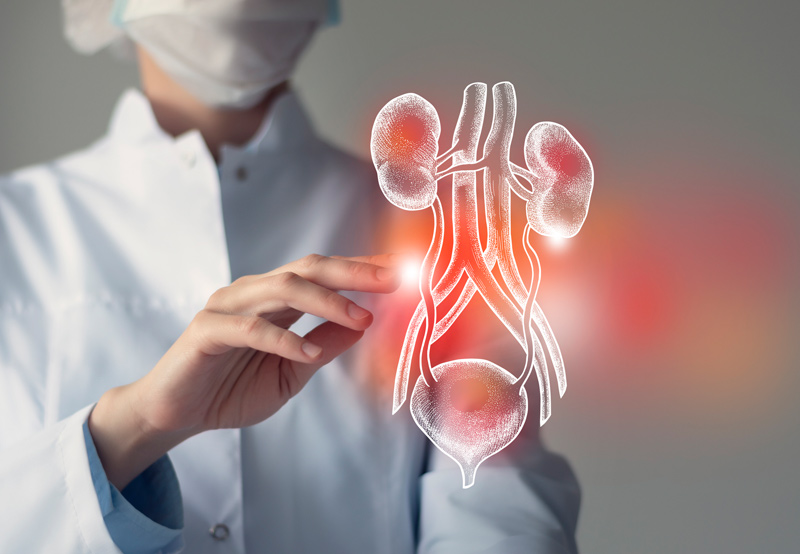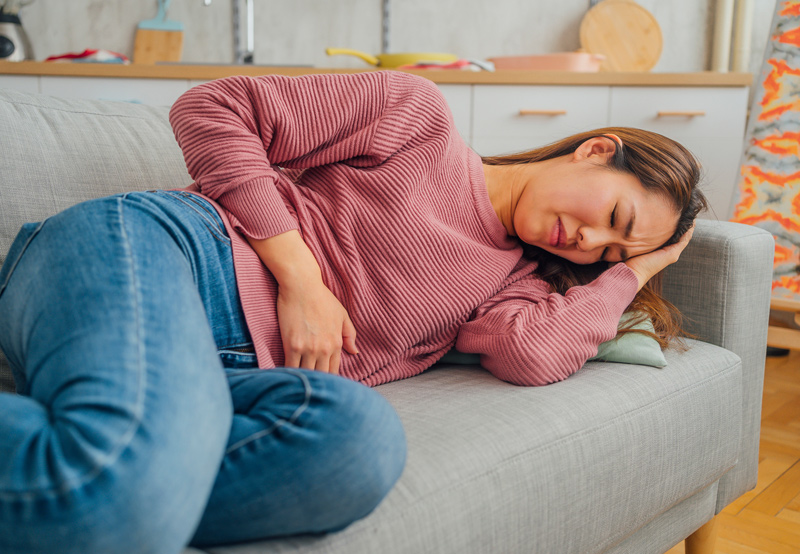

Interstitial cystitis (IC) is a chronic condition that causes pressure and pain in the bladder, as well as pelvic pain.
Symptoms of Interstitial Cystitis
Symptoms of interstitial cystitis vary and may change over time. Some individuals may experience symptom-free periods. Common signs of the condition include:
- Chronic pelvic pain
- Pain between the scrotum and anus in men
- A persistent, urgent need to urinate
- Pain during intercourse
- Frequent urination
- Pain in the pelvis or between the vagina and anus in women
- Pain or discomfort while the bladder fills and relief after urination
Symptoms of IC mimic those of a chronic urinary tract infection even though there’s usually no infection.
Left untreated, IC can lead to the following complications:
- Impaired ability to hold urine in the bladder
- Lower quality of life
- Strained personal relationships and sexual intimacy
- Stress and depression

Causes of Interstitial Cystitis
The direct cause of interstitial cystitis is unknown, but multiple factors may contribute. A defect in the protective lining of the bladder may allow toxic substances in the urine to irritate the bladder wall, autoimmune reaction, infection, heredity, and allergy may lead to IC.
Risk Factors
The risk of interstitial cystitis is higher among:
- Women
- Individuals in their 30s or older
- Individuals diagnosed with a chronic pain disorder, such as fibromyalgia or irritable bowel syndrome
Diagnosing Interstitial Cystitis
The process to diagnose a patient with symptoms of interstitial cystitis may include:
- Medical history review
- Bladder diary to record the volume of fluid intake and urination
- Pelvic examination of the external genitals, vagina, and cervix
- Urine test to check for a urinary tract infection
- Cystoscopy to evaluate the lining of the bladder
- Biopsy to check for bladder cancer and other rare causes of pain in the bladder
- Urine cytology to identify cancer
- Potassium sensitivity test
Treatment Options
Patients will typically need multiple treatments and various combinations of treatment to experience symptom relief.
Physical therapy can help alleviate pelvic pain associated with restrictive connective tissue, muscle tenderness, and muscle abnormalities in the pelvic floor.
The following oral medications can also help improve symptoms of interstitial cystitis:
- Antihistamines, such as loratadine to reduce urinary urgency and frequency
- Tricyclic antidepressants such as amitriptyline or imipramine to relax the bladder and block pain
- Nonsteroidal anti-inflammatory drugs, such as ibuprofen or naproxen sodium
- Pentosan polysulfate sodium to restore the inner surface of the bladder and protect the bladder wall from harmful substances
Nerve stimulation may also be recommended:
Sacral nerve stimulation: The sacral nerves connect the spinal cord to the nerves in the bladder. Stimulating these nerves can help reduce urinary urgency associated with interstitial cystitis. The physician will place a thin wire near the sacral nerves to send electrical impulses to the bladder. If the patient experiences relief, the device may be permanently surgically implanted. This treatment helps relieve urinary frequency and urgency, but doesn’t address pain from interstitial cystitis.
Transcutaneous electrical nerve stimulation (TENS): Mild electrical pulses relieve pelvic pain and may also help reduce urinary frequency. Increased blood flow to the bladder can help strengthen the muscles controlling the bladder. The physician will place electrical wires on the lower back or just above the pubic area to send electrical pulses.
